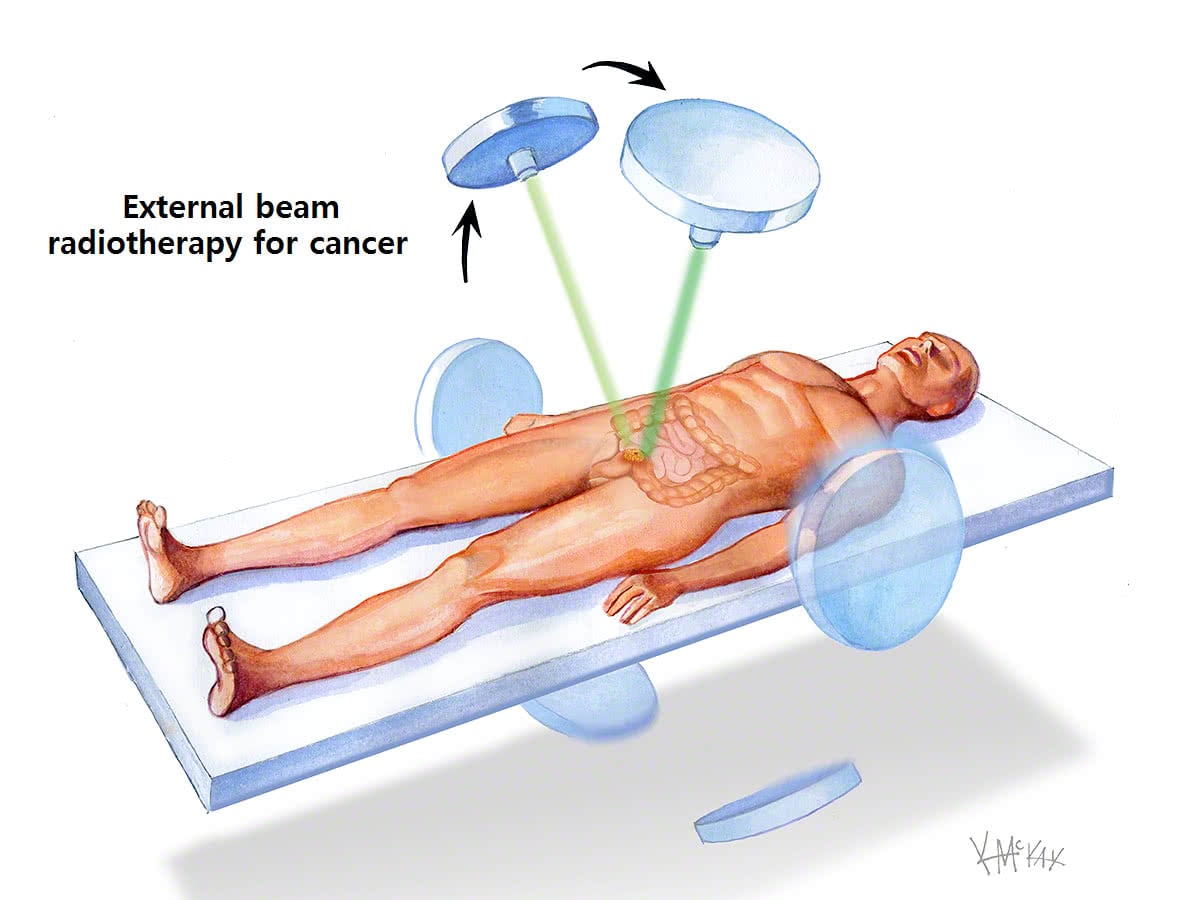.
Most patients with anal cancer can have their cancer treated successfully with a combination of external beam radiotherapy therapy and chemotherapy.
This allows for preservation of the function of the anal sphincter muscles (ring-shaped muscles surrounding the opening) and is a major advantage over surgery. The length of radiation therapy and type of chemotherapy depend on the specifics of each case.
Radiotherapy
The goal of radiation therapy is to destroy cancer cells while minimizing the damage to surrounding tissue. An external beam therapy known as intensity modulated radiation therapy (IMRT) uses precisely shaped radiation beams to accurately deliver high-dose treatment. IMRT yields positive outcomes with fewer side effects than older forms of external radiation therapy. 45-60Gy dose of radiotherapy is commonly given, however this is tailored to the size and response of the tumour, as well as side effects. Typically, radiotherapy is given over 3 weeks.

Chemotherapy
Chemotherapy is a drug that kills rapidly dividing cancer cells. For anal cancer, 5 flouro-uracil (5-FU) and mitomycin C are used as they are radiosensitisers and improve the ability of radiotherapy to kill cancer cells. An intravenous bolus of mitomycin is given on the first day of treatment, and 5-FU is given at the beginning and end of the radiotherapy course.
Mitomycin C is more toxic than 5-FU and may be poorly tolerated in the elderly. However, it almost halves the local recurrence rate of anal cancer, and improves overall survival [1].
Surgery
Occasionally surgery is performed for very early cancer that has not yet resulted in invasion (AIN). Surgery is also indicated for residual anal cancer or recurrence of cancer following radiotherapy.
Local resection
Local resection involves the removal of the cancer and a small amount of adjacent healthy tissue. The incision site may be sutured close, left open as an ulcer that heals slowly over a period of 6 weeks, or covered with a skin graft harvested from the thigh.
Surgery following radiotherapy
Surgery may be indicated 3 months after completion of radiotherapy, if residual cancer is found on repeat biopsies. It can also be used if cancer recurs.
An abdominoperineal resection (APR) may be done. During this procedure, the surgeon removes the anus and the lower part of the rectum and creates an opening (stoma) on the outside of the body to pass waste. This is known as a colostomy.
References
- UKCCCR. Anal Cancer Trial Working Party. Epidermoid anal cancer: results from the UKCCCR randomised trial of radiotherapy alone versus radiotherapy, 5-flourouracil, and mitomycin. Lancet, 1996; 348:1049-54.

